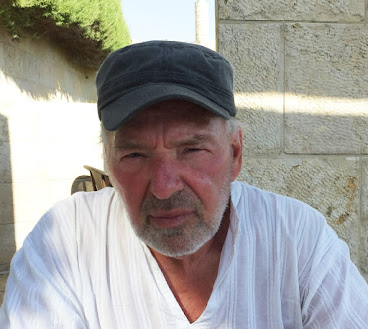Thank you rob mclennan for providing the second dose to keep the Mouse Eggs phenomenon alive (the first dose was manufactured last year by Endre Farkas who resuscitated a dormant mouse – the Phoenix Rising Issue). A phenomenon it was, make no mistake. If there was any doubt that poetry was alive and well in the late ‘70s Montreal, the dozen or so issues of this rat mag whose initials screamed “ME!” (I Am Poetry!) put that to rest.
I am breathless flipping through the pages (clicking through the screens)
Mouse Eggs was, simultaneously, an open and closed magazine. As such, it was a metaphor for many poetry-related truths: here the ego, there the id; above all, it became autonomous, a being-in and unto itself, a character of its own (its outward appearance accurately rendered on each cover by Marc Nerenberg).
Like Tristram Shandy, Mouse Eggs described its own birth – in the first issue, five of the 7 Vehicule Poets wrote a short quixotic poem, titled TCAKA (Tom, Claudia, Andre (Endre), Ken, Artie). This was the tzimtzum, a kabbalistic term for contraction, (in order to allow for a "conceptual space" in which finite and seemingly independent realms could exist. Mouse Eggs became that conceptual space.)
The next step of the “conception” was the first assignment: each poet would submit a poem on the theme of “8 ½ by 11”, the frame of the poem. Interestingly, it was Artie Gold’s “Poem on an 8&½ by 11” that described the generation of TCAKA, how we five ‘passed around this notebook of Claudia’s…’ and how Artie got bored and, after the second round, wrote ‘the end/ last line by Artie!’ How he would always want to have the last word and what that said about him and us. (At poetry readings, the order of readers usually leads to the final poet, considered the most popular, sometimes the “featured” if not the best. It was the position most desired.)
Here too probably for the first time, he’s wrestling with the notion of a group that would have its apotheosis in his writing the introduction to John McAuley’s 1979 anthology, The Vehicule Poets (it was the necessary and sufficient condition for the publication). So here he is, 4 years earlier, with ‘what we were doing, being apart, yes, but being apart-together.’ Then there is a big space, a long moment. He adds, ‘Is the business of the individual to each who is among a group, separately rise above it, yes, let us tower, conjoin our separate erections of the spirit, making an unbreakable parable in 5 by 1…’ but by that point he had lost it, he realized he was being thrown back upon the originating idea of 8 ½ by 11 which had now emerged as 5 by 1. The parable was broken.
And so, in that first issue, there are 5 poems with that title in the same order as the original TCAKA poem (which closes the issue). Again, Artie got the last word, “After me… the absolute deluge… (actual end) .”
Ken Norris sensed the spiritual significance of the moment:
“In
the beginning was the Verb
and the Verb was
Active”
What followed was “outrageous” writing, the more outrageous the better.
Issue after issue, a self-reflexive reference bled purple from its noxious pages. Ken wrote a poem that was not by me, I wrote a poem by (the one…and only…) DITTO. Let the machine speak for itself.
Issue after issue, testaments to this city’s beating heart: “Dante’s Inferno is selling at Cheap Thrills for 49¢.” I marked the events of note in 1977: “What was dada in “The Dada Show”? Nothing. What was not dada? Dada.” It was a word to separate, like Quebec from Canada, poems from poems, poets from poets. It was what was going on in Montreal at the time.
Our gallery, Vehicule Art, was what was going on in Montreal at the time. As in poetry at Vehicule, Sundays at 2. Or the press, Vehicule Press, that published our first books. Or performance at Vehicule, tonight 8 pm. Or, in my case, video at Vehicule, grab a portapak and become a visual/video poet. Or take a poem and put it on the buses. A thousand buses. Access to the means of production, that was Vehicule. Some people didn’t like it. Those fucking Vehicule Poets. What did we stand for that was so out of favour, out of flavour? Louis Dudek knew there was more to us than being wild. (Check out “A Real Good Goosin’: Talking Poetics with the Vehicule Poets”)
As for Peter Van Toorn’s separation of (our) messies from (their) neats, it was an attempt to quell a rebellion that had turned against a stifling convention that privileged praise and harmony in verse. While we revelled in the ironic, we rebelled against the academic. Everything was on the table:
Though
the dawn
slips
in
like a kiss/
perhaps
We need less
des-
criptive
poetry
Artie Gold
That we didn’t mind being identified as the “other” couldn’t have been very satisfying to them; a beautiful butterfly had landed on our shoulder, not theirs.
We had only to name it 8 ½ by 11 and it became a space for a poem. The aesthetic qualities were almost guaranteed – as sure as eggs is eggs – no one was expecting THIS. It was unfamiliar territory and we wanted it to stay that way.
DITTO.
Tom Konyves is a Canadian writer, poet, videopoet and videopoetry theorist. In 1978, he coined the term videopoetry to describe his first interdisciplinary work, Sympathies of War, and is considered to be “one of the original pioneers of the form”. In 2008, he began research in the field of videopoetry, publishing the groundbreaking “Videopoetry: A Manifesto” in 2011 to define the hybrid genre, assign constraints and categories to differentiate its various manifestations and specificities.







